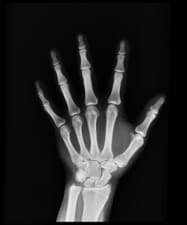
 If you've ever watched a good legal drama, you know that any legitimate claim is supported by good evidence. And when it comes to personal injury claims, medical evidence is the most important kind. Medical imaging, such as CT scans, MRIs, and X-rays, is a powerful tool in the presentation of personal injury cases; the images taken can prove just how serious or debilitating the injuries have been for the person who suffered them.
If you've ever watched a good legal drama, you know that any legitimate claim is supported by good evidence. And when it comes to personal injury claims, medical evidence is the most important kind. Medical imaging, such as CT scans, MRIs, and X-rays, is a powerful tool in the presentation of personal injury cases; the images taken can prove just how serious or debilitating the injuries have been for the person who suffered them.
Here, we discuss the differences between three commonly used medical imaging exams:
X-Rays
X-rays are the most commonly available and widely used medical imaging technique. This is because the equipment is less expensive and the images are cheaper to produce. X-ray uses a small amount of radiation that passes through the body to quickly capture a single image of your anatomy to assess injury (fractures or dislocations) or disease (bone degeneration, infections, or tumors). Dense objects, such as bone, block the radiation and appear white on the X-ray picture. Radiologists review the pictures and create a report with their findings to aid in diagnosis.
Computed Tomography (CT)
Computed tomography, more commonly known as a CT or CAT scan, is a diagnostic medical test that, like traditional x-rays, produces multiple images of the inside of the body. CT scan images provide more detailed information than plain X-rays do, and are particularly well-suited to quickly examine people who may have internal injuries from car accidents or other types of trauma. A CT scan can be used to visualize nearly all parts of the body and is used to diagnose injury or disease as well as to plan medical, surgical, or radiation treatment.
Magnetic Resonance Imaging (MRI)
MRIs are used to detect diseases or abnormalities throughout the body, such as brain aneurysms or tumors, but are also often used as a "second look" if other imaging scans provide inconclusive results. Unlike X-rays and CT scans, no harmful radiation is used in an MRI exam. Instead, MRI images are generated by pulsing radio wave energy through the body to produce cross-sectional pictures of organs and internal structure in the body.
The words used to describe pain are rarely as effective as an image. While words can be misunderstood, forgotten, or dismissed, an image can be recalled in greater detail and show absolute proof of injury. If you have been injured due to another person's careless or negligent actions, the team at Dugan & Associates is here for you, and we're ready to look at your case. Contact us for a consultation.
"*" indicates required fields